
| Specifications |
| Publisher: Adhyatma Prakashan Karyalaya, Bangalore | |
| Author: D.B. Gangolli | |
| Language: English | |
| Pages: 139 | |
| Cover: PAPERBACK | |
| 8.0 inch X 5.5 inch | |
| Weight 140 gm | |
| Edition: 1991 | |
| NAK372 |
| Delivery and Return Policies |
| Usually ships in 3 days | |
| Returns and Exchanges accepted with 7 days | |
| Free Delivery |
All empirical sciences develop their own respective methodologies of explaining the laws of Nature and the ways as to how best those laws can be utilized or harnessed to provide better comforts and facilities to all humanity in various walks of life. Hence there are two distinct aspects in their approach – one which is profoundly theoretical and purely technological. The common run of laymen are, more often than not, totally ignorant or oblivious of the Laws and the principles delineated by those sciences, but all of them show immense interest and an abiding affiance in their products, gadgets and technological appliances.
It is accepted on all hands that only when the theories evolved by the scientists are totally in consonance with the Laws of Nature a worth-while benefit accrues to everyone, and not otherwise. Similarly, unless and until the fundamental laws of Life (taken In Its entirety) as expounded by the Vedantic spiritual science are comprehended in their true perspectives its students cannot hope to cash in on its true benefits. One such profound, fundamental Law of Vedanta is ‘Adhyasa’ (misconception), which is at the root of all mundane dealings. And its subtle applications in this spiritual science are determined in Brahma Sootras, which are unintelligible to the laymen. This handibook reveals many secrets about Adhyaasa hitherto unknown and suggests practical hints as to how best the sincere students can utilize this unique teaching to overcome all the ills of mundane life.
"Unity amidst diversity" - is a succinct axiomatic truth revealed to all humanity by the Upanishadic texts, which are mostly the end portions of the Vedas and hence are called Vedantas: This unitary Spirit, which is the Ultimate Absolute Reality called Brahman or Atman in the Upanishads, pervades all duality and diversity of this wonderful universe of ours. The Knowledge of this all-pervasive Spirit is the very substratum, fountainhead of all other mundane empirical knowledges and sciences amassed and accumulated by Man from time immemorial. Evidently, this Spiritual science going by the popular name' of Vedanta', is to be given the pride of place over and above the other empirical sciences, if only we wish to reckon the true import of the profound pronouncement of all Upanishads that - "By knowing that unitary, non-dual Reality behind and beyond all this world of duality, all else, worth knowing, is discerned:'
Having been steeped in the Upanishadic Knowledge and its highly esoteric Intuitive approach, handed down traditionally from the teacher to the taught for ages. Shri Shankara Bhagavatpaada, the spiritual colossus of our era, gave to humanity an immaculate and impeccable methodology of teaching which can never be faulted or felled by any logical or dialectical system – past, present or future. This is true for all times and climes because Intuition is at the very root of all human knowledge, be it empirical, religious or spiritual, and hence no intellectual knowledge, or for that matter science, can outreach or outstretch Intuition and sublate or falsify it, In fact. Intuition pervades and subsumes all intellectual pursuits and perspectives and is the core of Being of everything in this multi-spangled celestial universe of ours.
This all-consuming Intuitive approach taught in and through the Upanishadic lore was revealed by a long line of dedicated seers and sages. but it stands to his credit and glory that Shri Shankaraachaarya expounded this perfect traditional and time-honoured methodology in such unequivocal and convincing terms and manner that his Intuitive approach has been reckoned to be infallible, never to fail to deliver the goods, so to speak. But since the Absolute Reality of Vedanta is non- dual, beyond all categories of time-space-causation as also outside the purview of all percepts and concepts, the genuine seeker of this Reality of Atman has necessarily to have certain sterling qualities and excellences of head and heart so as to be fully receptive and be guided properly to Intuit his own Self beyond, and subtler than, his ego. In truth, it means that one has to give up his deep-seated 'egoism' and Intuit his Self.
In order to remove the great confusion which prevailed at the time and which had been caused by several renowned preceptors who had missed the mark, so to say (they had misunderstood the real import of the Upanlshadlc texts and had misinterpreted the prime purport or goal of Vedanta Shaastra). Shri Shankara appeared on the Indian spiritual firmament as a resplendent star which drove away the darkness that had enveloped the minds of scholars and scholastics alike.
Shri Shankara's extant Bhaashyas on the three canonical texts of the ten principal Upanishads, the Bhagavad Geeta and the Brahma Sootras expounding Advaita Vedanta have an aura of their own and his perfect methodology clinches the issue by resolving all kinds of doubts and anomalies. That is so because it is entirely based on universal and plenary Intuitive experience (Saarvatrlka Poorna Anubhava) which is the unfailing touchstone of all human endeavour. Hence, the first fundamental teaching of Shri Shankara's Vedanta is that - 'All deliberations on the Upanlshadlc tenets must necessarily be based on this universal Intuitive experience alone' - which is truly 'the be all and the end all' of human existence (Purushaartha). With a view to focussing the attention of the true seeker on this subtle but all-pervasive Intuition, which is the very substrate of everyone's T notion (ego), Shri Shankara bestowed upon the spiritual world his unique teaching pertaining to 'Adhyaasa' (misconception, of the nature of delusion) on which he elaborated in his introductory Bhaashya on Brahma Sootras.
It is one of the most important secrets of Shri Shankara's Vedanta that this Adhyaasa is at the very root of all mundane transactions of Man and that by means of Intuition alone one can go beyond and conquer this delusory Adhyaasa, which is termed as 'Avldyaa' by the Pundits. In fact, this Adhyaasa as depicted and delineated by the great teacher leads to the 'Bondage of Samsaara', and by means of Intuitive experience (termed Saakshl Anubhava or Avagatl in Vedantlc parlance) alone one can get himself released or liberated from this Bondage. Since this Intuitive experience happens to be everyone's everlasting essence of Being. Shri Shankara teaches that - "Being under the spell. or in the grip of this delusory Adhyaasa (Avldyaa) is itself 'Bondage' and attaining to the Intuitive experience which is the very core of our Being is itself 'Lfberattori'.
Yet another great secret of Shri Shankara's Vedanta is that this fundamental Adhyaasa brings about in its wake not only all secular or mundane transactions but also the religious and spiritual transactions; and unless and until the true seeker undergoes an intensive 'splritual education and training' under a vigilant and versatile preceptor satiated with the traditional methodology based on Adhyaaroapa Apavaada Nyaaya (aphorism of Deliberate Superimposition and Rescission) adopted in and through the Upanlshadlc lore, he will not be able to discern and divine the real purport of Vedanta. This revelation about this traditional methodology implicit in all the Upantshads is the second fundamental teaching of the Great Master.
This study leads the seeker to three corollaries of these two rudimentary teachings. and they are: (i) To distinguish between this plenary Intuitive experience (Saaksht Anubhava or Avagatt) and the mundane but universal experiences of percepts (Pratyaya or Pratyaksha Anubhava) and concepts (Vedana Anubhava): (ii) to distinguish between the Shaastratc or Paaramaarthtc (Intuitive) viewpoint and the Vyaavahaartc (empirical) viewpoint - this aspect is dealt with in some detail in this treatise and it helps to reconcile many an apparent contradiction in the Upantshadtc doctrines: (Hi) to distinguish between what is within the purview of the agent of an action (Kartru Tantra) and what is pertaining to a real entity, but not in the control or purview whatsoever of this agent of action (T notion) - (Vastu Tantra).
In this treatise, which is published close on the heels of "The Essential Adi Shankara" as its 'companion volume', an earnest attempt has been made to unravel all these profound secrets of Shaankara Vedanta so as to equip the ardent seeker with a master-minded methodology which never fails to resolve and reconcile" any apparent contradiction that may crop up anywhere in the Upantshads (in fact. all of them are replete with apparently confusing and contradicting statements and even apparent anomalies). Under the circumstances, it need not be gainsaid that to an uninitiated and Immature student these esoteric Upantshadtc teachings sound like 'the ramblings of an unsound mind' or weird figments of Imagination' indeed. For that matter, many Indian and foreign 'philosophers' and scholars could not make out the head or the tail of these spiritual texts and have written mutually conflicting and confusing commentaries to augment the already-existing chaos. And so, it is truly a marvel of our 20th Century- which has taken such stupendous leaps both in the intellectual and the scientific spheres - that despite the predominant materialistic-nay anti-religious, nihilistic or sceptic-outlook of our age and its multiplying new wants and creature comforts. Vedanta alone provides the panacea for all human ills and failings as well as the master-key to universal prosperity and peace.
This book is dedicated to the memory of Adi Shankara, the world teacher, and Swami Satchidanandendra Saraswati, my spiritual gutde, who treaded in the footsteps of Shri Shankara and. just like him, cleared a great deal of morbid moss that had grown around pristine pure Advatta Vedanta. Founder of the Adhyatma Prakasha Karyalaya at Holenarsipur. Hassan District. Karnataka State, in the late thirties and later its branch at Thyagarajanagar. Bangalore - 560 028. Swami Satchidanandendra Saraswati rendered yeoman service to the spiritual world by culling out and collating the above-mentioned five 'magic Jewels of Intuitive Knowledge' which were implicit in the original Bhaashyas of Shri Shankara but hidden from the perfunctory gaze of many a seasoned scholar or Indologist. Fortunately, those original Bhaashyas on the Prasthaana Traya are still intact and extant in their genuine form throughout the length and breadth of our country.
The Swamiji who dedicated his life to the study and practice of Advalta Vedanta as taught by Adi Shankara did yet another good turn by pin-pointing the attention of academicians and anchorites on the subtle distinctions between the two technical Vedantic terms of 'Avidyaa' and Maayaa', which have caused most of the confusion among the present-day Vedantins. Shri Shankara has never equated the two terms; in fact. he has taken all the pains and has left no stone unturned, as it were, to bring home the distinction between the two which are akin to 'cause' and 'effect', respectively, and he is very emphatic, and meticulously cautious, always to qualify Maayaa by the adjectival phrases of 'Avidyaakrita', 'Avidyaa-Kalpita', 'Avidyaa(ss) tmaka'. 'Avidyaapratyupasthaapita' etc. throughout his Bhaashyas. Totally oblivious of these profound distinctions, the two terms have been interchanged and mixed up by the post-Shankara Vedantins who gave logic more importance than Anubhava to cause a great deal of confusion and distortion of the original works and their real import. So much so, a persistent belief that - "Shri Shankara was a giant of a logician and his brand of Vedanta which is highly dialectical in its approach and treatment is beyond the comprehension of the ordinary students and seekers" - lurks in the minds of lay men. However, it was sheer divine dispensation, as it was given to Swamijl, of revered memory, to cleanse Shaankara Vedanta of this accumulated dross and put it back on the high pedestal where it deserved to be.
Many important controversies which are taxing the minds of true seekers are examined and resolved in this handibook, which is a free trasliteration of Swamiji's Kannada jewel - "Vedaantaartha Saarasangraha". The relevant original Sanskrit Bhaashya excerpts (which are quite often mentioned partly, for the purpose of substantiation) should be thoroughly studied from the English translations of the Prasthaana Traya Bhaashyas published by the Shri Ramakrishna Mission monks. However, the purport or gist of these long Bhaashya portions are given succinctly so that their real importance and relevance are brought to bear on the minds of the uninitiated or immature students, Readers should remember that the word 'Aatman' occurs in this book thousands of times. It is spelt - 'Atman' with single 'a' for convenience sake; in the same way, the word 'Vedanta' is, spelt with a single 'a', though it is pronounced with a long sound as in the former word. But both the words, when used in a Sanskrit Bhaashya quotation, are used with two 'a's.
I would like to record here my sincere gratitude towards the Publishers. Adhyatma Prakasha Karyalaya. Thyagarajanagar. Bangalore - 560 028, for all the encouragement, patronage and unstinted cooperation that they have given me in bringing out this book. I have also to express my thanks to the Printers - Verba Network Services, 12th Cross Road, off 8th Main. Malleswaram. Bangalore – 560003, who have once again done a perfect job.
1. Question: What is meant by Vedanta?
Answer: 'Veda' means that Shaastra or science which expounds extra-sensory phenomena not within the ambit or purview of perception (Pratyaksha), inference (Anumaana) and such other empirical means of knowledge (Loukika Pramaanas), In that Shaastra it has been mentioned that a person should perform certain Karmas or actions, rituals or rites in order to attain certain good invisible fruits or results as well as that he should not perform certain other Karmas so as to be able to avoid or parry certain undesirable fruits or consequences, In this manner that part of the Veda which is of the nature of injunctions (Vidhi) and prohibitions (Nishedha) is called in religious parlance 'Shaastra', Thus Shaastra means: 'It should be done in this manner' and 'It should not be done in this manner ('Shaasti Itt Shaastram'). However, there is, in addition, another part in the Vedas which expounds the Ultimate or Absolute Reality (Paramaartha Tattwa) also, Because this latter part expounds the Reality (Tattwa), it is also called 'Shaastra' ('Shinashti iti Shaastram') alone. Because of the reasons that: (I) It determines the Reality expounded or enunciated in the Vedas; (ii) and that textual portion is to be found at the end of Aaranyakas, which are also a part and parcel of the Vedas themselves - those Vedic portions or texts which expound the Ultimate Reality are themselves called 'Vedantas' only. Because those texts contain the secrets of the Ultimate Reality which is beyond the purview of the senses as well as the mind, those texts have been given another conventional name of 'Upanishads' also,
2. Q: Which is that entity which is called 'Vedaantaartha'?
A: 'Artha' or the entity that is enunciated in the Vedanta Is that 'Paramaartha' or Ultimate, Absolute Reality which is the very essence of Being of the whole universe. That Reality has been called in the Upanishads by various names like 'Atman' (the essence of Being. Self. 'Paramaac an' (the Ultimate Reality or Being) 'Brahman' (That Absolute Reality of the essential nature of eternally Pure, eternally Conscious, eternally Free, i.e. Nityashuddhabuddhamuktaswaroopaha, and the Immutable Entity, i.e. Aparichhinna), 'Akshara' (That Entity without any special qualities or characteristics and indestructible), 'Purusha' (That Entity which pervades everywhere), 'Sat yam' (Really existing Entity) etc. In a manner of speaking, all the phenomena or entitics that have been taught or expounded in Vedanta Shaastra or the spiritual science of Vedanta are fit to be called 'Vedaantaartha' indeed. Behind all those phenomena or objects, that prime principle which is the very substratum for them all is Intuition, and hence the title of this book has been based on It so as to suggest that Intuition (acting as the very locus or basis for all. genuine Vedantic teachings of Adi Shankara) is Itself the basis for all deliberations mentioned herein.
3. 9: Who is qualified to listen to the spiritual teachings or precepts or Vedanta?
A: Those who wish to listen to and learn this spiritual science and attain thereby its profound fruits or benefits should necessarily possess four qualifications of: (i) Nitya-Anitya Viveka: (II) Iha-Amutra Arthabhoaga Vlraagaha: (iii) Shama-Dama Aadl Shat Sampat: (iv) Mumukshutwa.
To explain:
(i) Nitya-Anitya Vivekaha: Means the steadfast belief which is the resultant of a Viveka or Intuitive deliberation to the effect that whatever fruit or benefit that is got as a result of some mediatory means of action (Kritaka) is truly Anitya or non-eternal. Whatever is achieved in this world (Loaka) is, in truth, Anitya indeed, for every now and then all those achievements or acquisitions are dissipating, degenerating (Kshayaswabhaavaha): in a similar manner, whatever happiness to be enjoyed in other worlds herefore to be acquired as a result of 'Dharma' or religious deeds or merits here in this life is also dissipative and hence impermanent alone. In this Nitya-Anitya Viveka the unique teaching that - "For the sake of such non-eternal, transient happiness whatever Saadhana or effort is put in - howevermuch firm and strong it may be - that resultant benefit will be, at best, proportionately lasting or durable, but can never be ever-lasting, eternal" - is implicit.
(ii) Iha Amutra Artha Bhoaga Viraagaha: That high sense of renunciation (Vatraagya) in mere enjoyment - born as a result of the above-mentioned Viveka in (I) and by getting rid of any kind of hankering after achieving or acquiring any particular thing or objective either in this present world of this birth or any other world of the next birth and enjoying it - is called Iha Amutra Artha Bhoaga Viraagaha.
(iii) Shama Damaad Shadsampat: One who practises the six physical and psychic disciplines or human excellences like: Shama (Control over the inner instrument of the mind). Dama (Control over the external instruments of the five senses). Uparati (Introvertedness). Titeeksha (Forbearance). Shraddha (One-pointed dedication) and Samaadhaana (Equipoise of the mind) - he alone will be able to attempt to Intuit or cognize the Ultimate Reality of At man with all steadfast dedication.
These six disciplines are very essential for any Saadhaka or seeker to undertake the next higher and profound spiritual practices, which will enable him directly to Intuit his essential nature of Pure' Being-Consciousness- Bliss of Atman. Here in this context the seeker should remember that since Atman is his eternal' Being and not a resultant product or fruit of any physical or mental action, all these disciplines are meant, in the ultimate analysis, for the cleansing of his psyche of all its dross in the form 'of desires, distractions, aims and objectives in this mundane world, nay in 'Other worlds too. From this standpoint, the six disciplines will acquire some extra meaning and significance like: Shama means controlling the mind so as not to allow it to stray out in thinking about objects or phenomena in the external world: Dama means keeping the five senses too in check accordingly: Uparati means giving up all attempts and actions to acquire external objects or 'seek any objective by the subtle practice of introvertedness: Titeeksha means the capacity to withstand or bear with the suffering posed by the pairs of opposites like cold and heat. pleasure and pain etc.: Shraddha means the unflinching or unstinted faith to the effect that: 'Surely and certainly the path of attaining the final goal of human existence (Purushaartha) will accrue with the aid of the scriptural sentences (Shaastra Vaakya); Samaadhaana means the capability of maintaining the equipoise of the mind without allowing it to, get perturbed or disturbed by external, environmental conditions or situations. Getting a mastery over all these six disciplines alone is called here the 'Shadsampat' or the six-fold wealth or asset of all human beings.
(iv) Mumukshutwa: One who has an innate desire to perform Karmas and to enjoy their fruits - such a person keeps on performing Karmas over and over again and unavoidably gets repeated births in 'order to reap the relevant fruits and enjoy them. Thereby he becomes fully bound by this vicious circle of Janma Karma Bandha'; A burning desire of the type - "How best can I get rid of this Bondage?" - alone is termed here Mumukshutwa.
And one who has acquired these above-mentioned spiritual disciplines called 'Vivekaadi Saadhana Chatushtaya' alone is the fit person for Vedanta Shravana or listening to the Upanishadic teaching which is of an esoteric essence indeed.
4. Q: Then, in that case, those who do not possess these 'Saadhana Sampat' will not be able to cognize or comprehend the real purport of the Vedanta teachings, is it so?
A: It is possible to know as to what has been propounded in the Upanishads by determining the meaning of the sentences. But those who undertake to comprehend the word-meaning (literally) in that fashion may stop their deliberation at that stage itself just like those who read the newspapers with all curiosity or eagerness. However, to those who do not try to 'cognize what has been listened to from the scriptures so as to culminate in their Intuitive experience, the benefit which has to accrue from the Vedantic teaching (instruction) will never be attained. For, such people, instead of attempting to determine or discriminate about the essential nature of Reality behind the universe, will be ever hankering after the sensual enjoyments in the external world. In this regard a scripture says: "Paraachaha Kaamaananuyanti Baalaaste Mrityoaryanti Vitatasya Paasham; Atha Dheeraa Amritatwam Viditwaa Dhruvamadhruveshwiha Na Praarthayante. '''Meaning: "Only those who are devoid of Viveka or discrimination pursue desires or pleasures in the external world; they are like (innocent) children who are becoming a prey for Death which has cast Its net everywhere. Therefore, those who are blessed with the ability to discriminate (Intuit) that Immortal Reality (which happens to be everyone's Self of the essence of Pure Being-Consciousness, Intuitive experience) remain without hankering after anything in this Samsaara or transmigratory existence, knowing full well that nothing here that can be acquired Is eternal." - (Kaathaka or Katthoapanlshad 4-2).
5. Q: Is it true that to obtain Jnaana or Intuitive Knowledge accruing from the Vedantic teaching, listening ('Shrauana') to the Upanishadic precepts alone is enough?
A: Although for those Uttamaadhlkaaris or the superior, highly qualified (evolved) persons, who are infinitesimally small In number, exclusively the exercise of listening to the Upanishadic teachings alone may be sufficient. for the numerous aspirants that kind of listening to the scriptural texts like Bhagavad Geeta and Brahma Sootras in addition and then to collate and cogitate so as to find complete agreement in all their spiritual teachings will become necessary. For, the Upanishads are the fundamental Shaastra Prasthaana, meaning. A scientific of approach: the Geeta is a Smriti Prasthaana or a system based on memory adopted to explain the subtle purport or secrets of Intuitive knowledge implicit in the Upanishads: and brahma Sootras comprise the Nyaaya prasthaana or logical system adopted to establish or determine the real purport of the Vedantic teaching by means of dialectics. Intuitive reasoning or ratiocinations etc. Thus true Vedantic Jnaana has per force to be determined on the strength of this triad of authoritative scriptural texts called Prasthaana Traya.
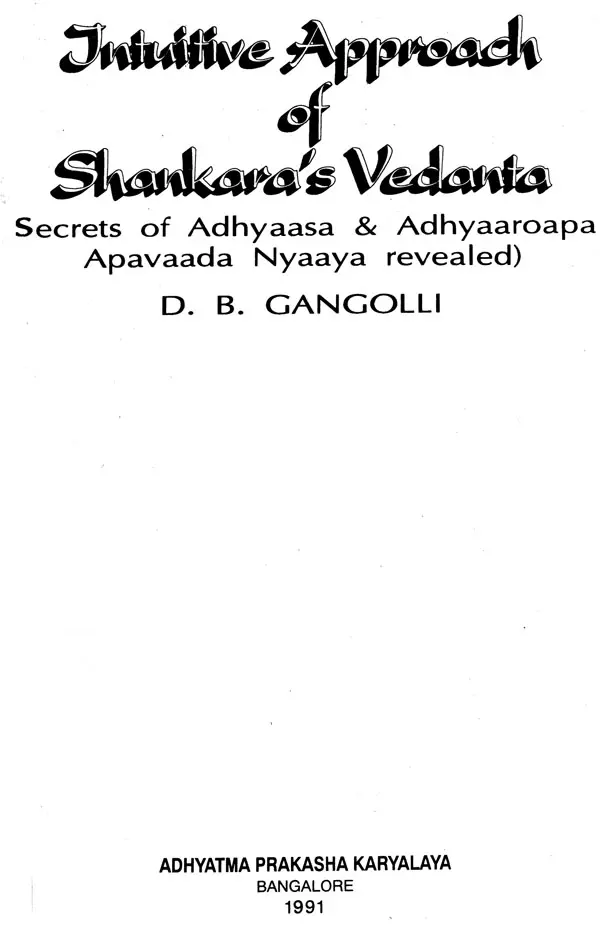
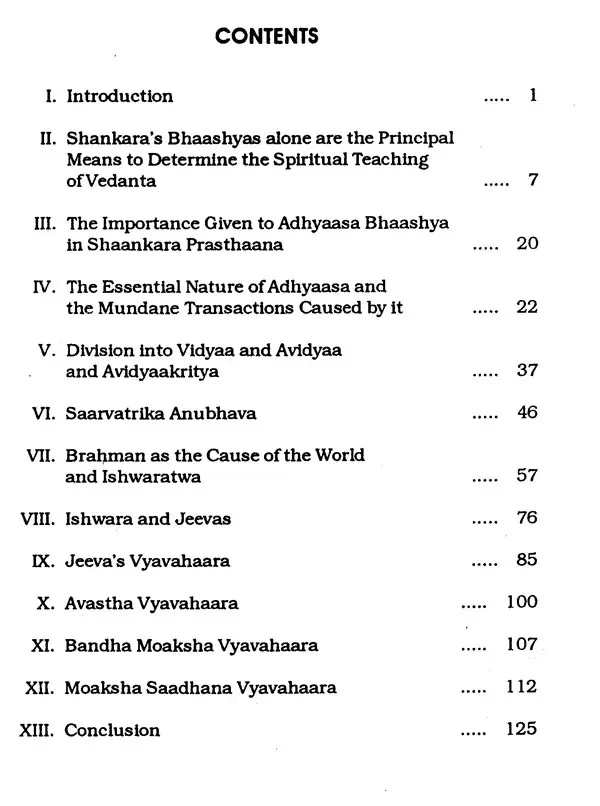
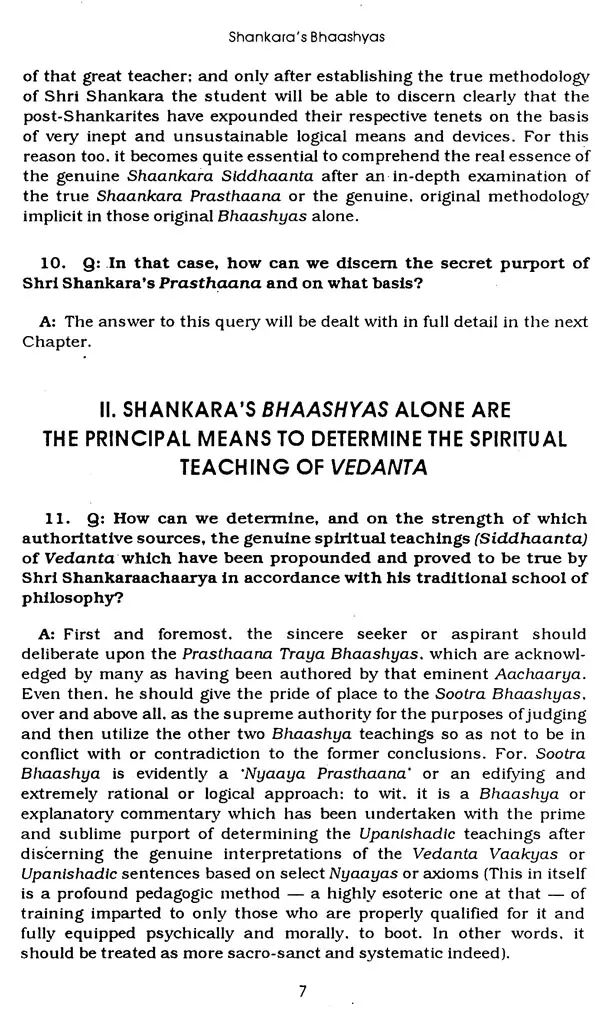
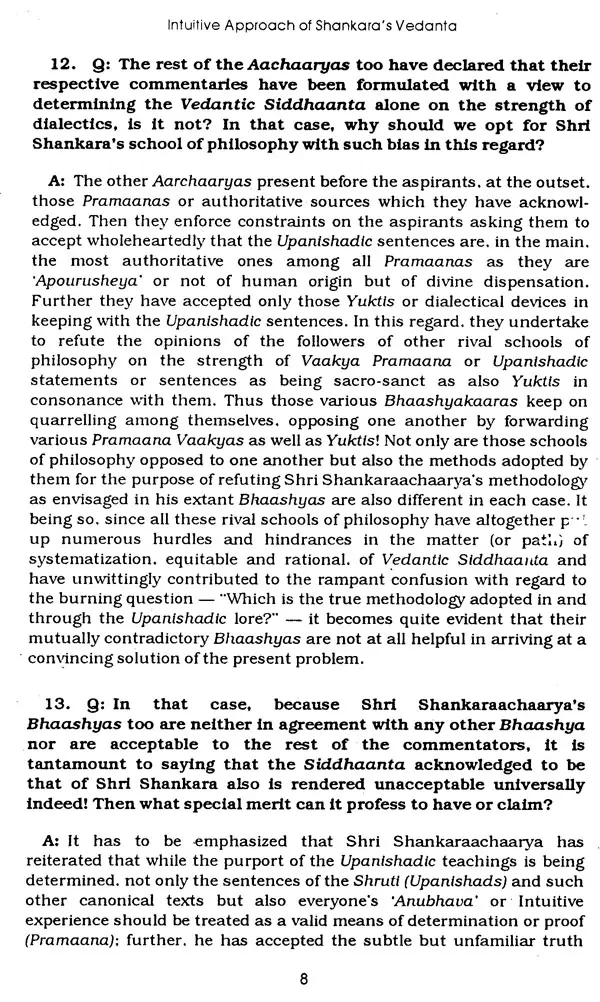
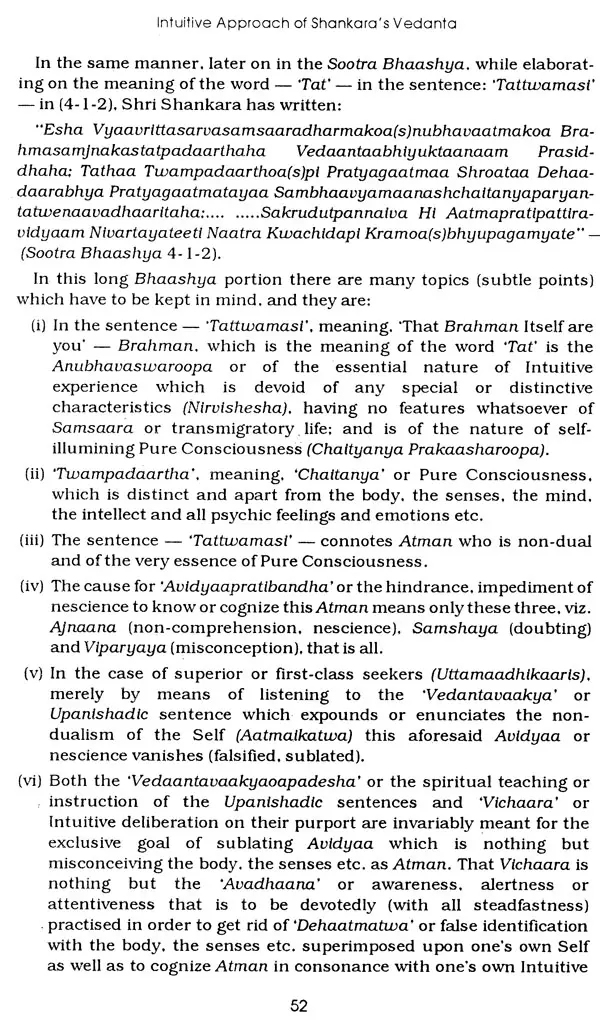
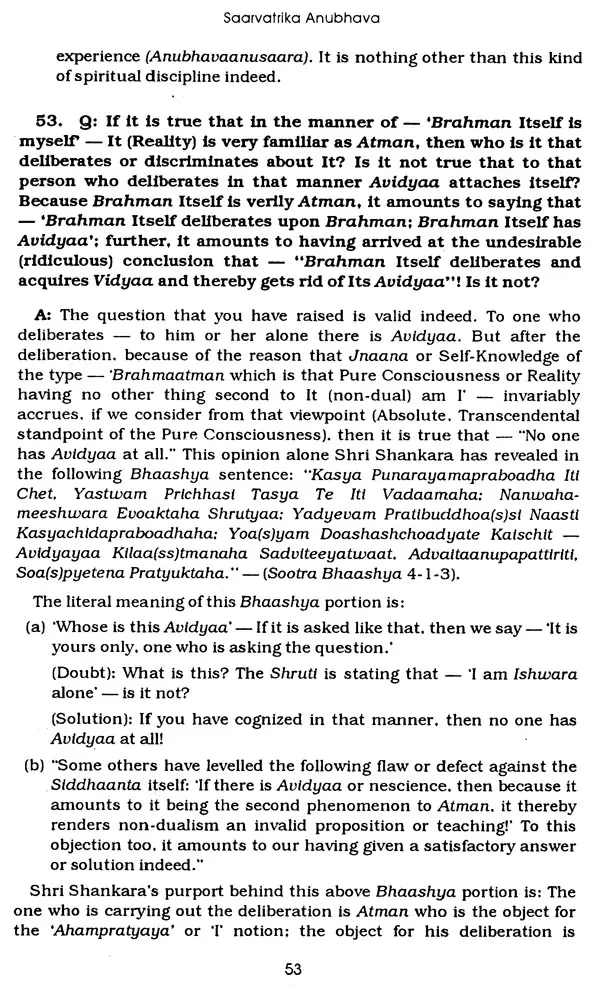
Send as free online greeting card
